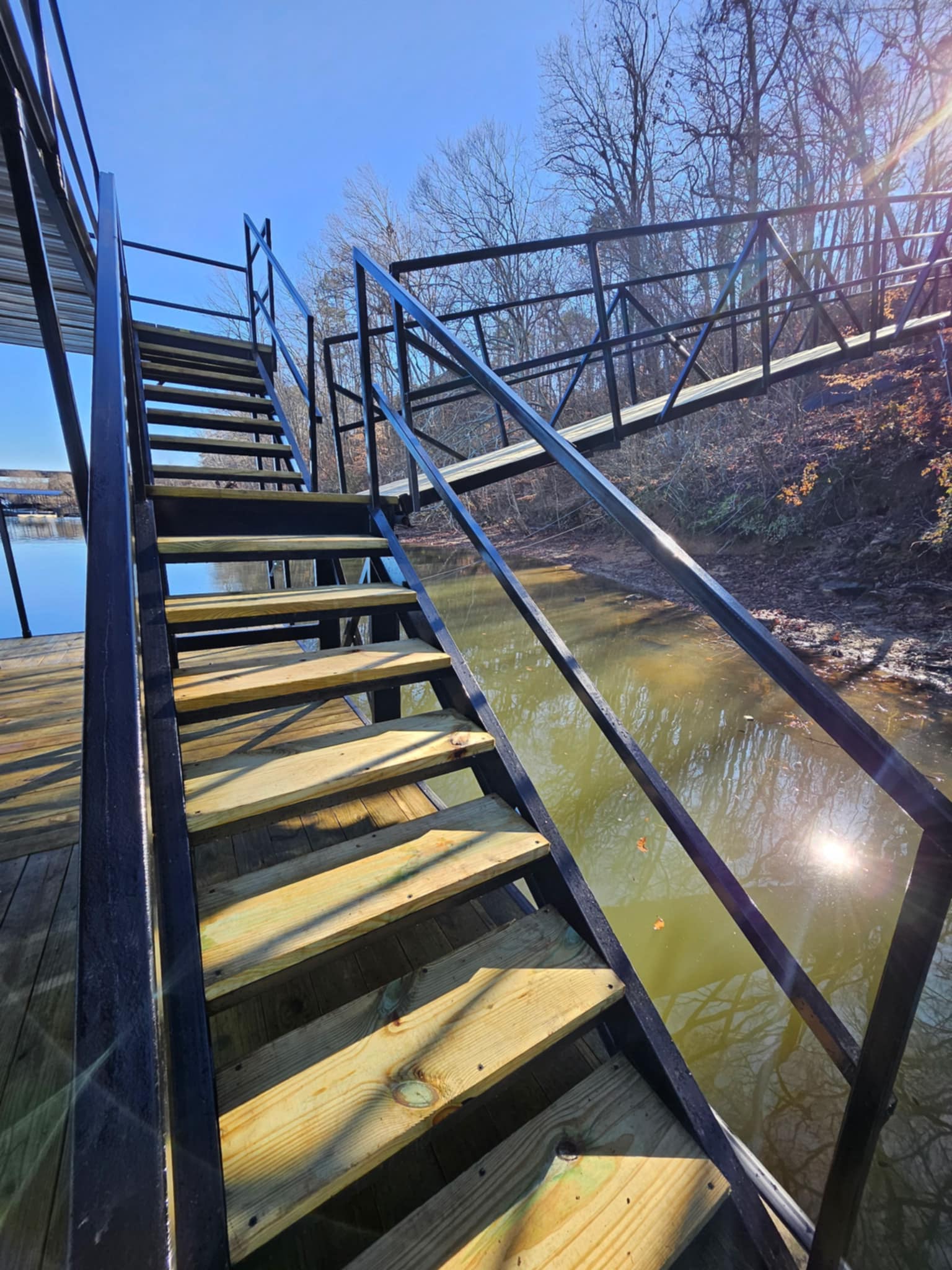The Tugaloo River: A Connection to the Past
- Mid-Lake Dock and Hardscape

- Apr 11
- 3 min read
Updated: Jul 22

The Tugaloo River has played a vital role in the history of the Southeast, serving as a major transportation route for Native Americans, traders, and settlers. The Cherokee Nation thrived along its banks, using the river for travel, trade, and sustenance. Today, remnants of this rich history remain preserved in the landscapes and archaeological sites along the waterway.
Cherokee Heritage and the Tugaloo Mound
Nestled near the entrance of the creek leading to Long Nose Falls, the Tugaloo Mound is a site of immense cultural and spiritual significance to the Cherokee people. Once a thriving center of indigenous life, this sacred ground has faced challenges from modern development, particularly the construction of Lake Hartwell, which partially submerged the site. Despite these threats, conservation efforts continue to honor and protect this irreplaceable heritage while educating future generations about its significance.
Historically, Tugaloo Mound served as a ceremonial and political center for a Cherokee town, where mound structures were used for rituals and council gatherings. Before European settlers arrived, the Native American people of the region lived in harmony with the land, cultivating traditions deeply tied to their surroundings.
Archaeological excavations in the late 1950s and early 1960s uncovered evidence of this once-thriving Cherokee settlement, including the remains of two Cherokee chieftains. These remains were initially preserved for safekeeping, but in 1977, a catastrophic flood destroyed Morrison Hall at Toccoa Falls College, where they were being stored. It is believed that the floodwaters ultimately returned the chieftains to their original resting place.
Preserving the Sacred: Honoring the Legacy of Tugaloo Mound
The Tugaloo Mounds are federally protected and not open to the public to ensure their preservation and honor their historical and cultural significance. By supporting conservation efforts, advocating for Indigenous rights, and educating others about this sacred history, we help safeguard its legacy. Respecting and protecting these ancestral lands ensures that the voices and traditions of those who came before us continue to resonate for generations to come.
Outdoor Adventure: Paddling the Tugaloo
For those eager to explore the deep Cherokee connections and rich history of the Tugaloo River, the Tugaloo River Water Trail offers valuable historical insights and guides.
The waters make for a perfect kayaking or canoeing experience, offering both peaceful stretches and occasional swift currents to add excitement. Whether you’re an experienced paddler or a beginner, the Tugaloo River Water Trail provides resources and guides to help you navigate the best routes.
As you paddle, you’ll find yourself immersed in stunning scenery—towering trees, rocky outcrops, and abundant wildlife. It’s common to spot herons wading along the shore, turtles sunning themselves on logs, and even the occasional Bald Eagle flying overhead.
To truly appreciate the deep-rooted history of the Tugaloo River has to offer, consider a guided kayaking tour. Check out the Tugaloo River Water Trail guide website: Tugaloo River Paddle Guide. They provide extensive historical information, maps, and tips for planning your adventure along this historic waterway.
Hiking Trails: Exploring the Land
Tugaloo Bend Heritage Park is an 87-acre site rich in both history and natural beauty. Once the location of the Cherokee town of Estatoe, the area later became a working farm before being preserved as a heritage site. Today, the park offers a peaceful retreat with scenic hiking trails, picnic spots, and educational displays that highlight the cultural significance of the Tugaloo Valley. Managed by the Stephens County Foundation, the park provides free access to visitors, making it a great destination for nature lovers, history enthusiasts, and families looking to explore the outdoors.

The Tugaloo River is more than just a scenic retreat; it’s where history, nature, and adventure come together. Whether paddling its waters, fishing along its banks, or hiking its trails, every journey deepens our connection to the past and our appreciation for the beauty around us. At Mid-Lake, we are proud to support our community by celebrating and preserving this rich history. As a testament to the heritage that has shaped our region, the Tugaloo River holds stories worth remembering. By sharing its past, advocating for conservation, and encouraging exploration, we hope to inspire a lasting appreciation for the cultural and natural treasures that make our community unique.


Bibliography
Southern Indian Studies. (1960). Excavations at Tugaloo Mound, Georgia. Southern Indian Studies, Volume 12, University of North Carolina at Chapel Hill. Retrieved from https://rla.unc.edu/Publications/NCArch/SIS_12.pdf
Explore Georgia. (n.d.). Tugaloo Bend Heritage Park. Georgia Department of Economic Development. Retrieved from https://exploregeorgia.org/toccoa/arts-culture/cultural-trails-tours/tugaloo-bend-heritage-park
Tugaloo River Water Trail. (n.d.). Paddle Guide and Historical Resources. Retrieved from https://www.tugaloowatertrail.org
Stephens County Foundation. (n.d.). Tugaloo Bend Heritage Park Overview. Internal educational signage and preservation information.
Toccoa Falls College. (1977). Morrison Hall Flood Incident Records. (Referenced in article in relation to the loss of Cherokee remains during the flood. No direct publication available.)








Comments